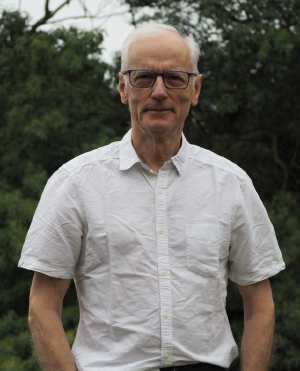
Dominique DE VIENNE
dernières mises à jour 19/07/2024
-
01 69 33 23 60</br>06 77 79 94 31
dominique.de-vienne@inrae.fr
Biologie de l'Adaptation et Systèmes en Évolution
UPSay, Professeur emeritus
publications - orcid
Positions
- Former Research Director at the French National Institute of Agronomical Research (INRA).
- Professor at the Université Paris-Sud, then Université Paris-Saclay, from 1990 to 2017.
- Currently ethics officer and whistle-blowing officer of the University Paris-Saclay.
Research management
- Former Director of the Plant Genetics Laboratory (INRA, Université Paris-Sud, CNRS, AgroParisTech) in Gif-sur-Yvette (1999–2014)
- Member of the Scientific Council of the Doctoral Schools Genes, Genomes, Cells, then Structure and Dynamics of the Living Systems of the Université Paris-Saclay (2000-present).
- Regular member of scientist evaluation authorities (Université Paris-Sud, CNRS and INRA) and of the French High Council for Evaluation of Research and Higher Education (Hcéres).
Research interests
My constant scientific interest is focused on the relationships between genotype and phenotype and on the emergence phenomenon. My work dealt initially with the analysis of maize responses to water deficit, using molecular markers and proteomics. My group played a pioneer role in quantitative proteomics in France, and in the detection of genes that control protein expression (pQTL). My current area of research is modelling in quantitative genetics, relying on biochemical theory of metabolic networks and systems biology. In this context I analyse: (i) the bases of heterosis (hybrid vigor), a major phenomenon for plant and animal breeding; (ii) the evolution of protein concentrations when there is directional selection on the metabolic flux; (iii) the way the genotypic variation propagates across the phenotypic levels up to the fitness.
Teaching
- Quantitative and populations genetics
- Eukaryote evolution
- Mathematic modelling of metabolism.
Publications
- Coton C., Dillmann C., de Vienne D. . (2023) Evolution of enzyme levels in metabolic pathways: A theoretical approach. Part 2. Journal of Theoretical Biology, (558) 111354
- Coton C., Talbot G., Le Louarn M., Dillmann C., de Vienne D. . (2022) Evolution of enzyme levels in metabolic pathways: A theoretical approach. Part 1. Journal of Theoretical Biology, (538) 111015
- de Vienne D. , Capy P.. (2022) Special issue on “The relationship between genotype and phenotype: new insight into an old question”. Genetica, 3-4 (150) 151-151
- de Vienne D. . (2022) What is a phenotype? History and new developments of the concept. Genetica, 3-4 (150) 153-158
- Petrizzelli MS., de Vienne D. , Nidelet T., Noûs C., Dillmann C., Kaleta C.. (2021) Data integration uncovers the metabolic bases of phenotypic variation in yeast. PLoS Comput Biol, 7 (17) e1009157
- de Vienne D. , Fiévet JB.. (2020) The Pitfalls of Heterosis Coefficients. Plants, 7 (9) 875
- Petrizzelli M., de Vienne D. , Dillmann C.. (2019) Decoupling the Variances of Heterosis and Inbreeding Effects Is Evidenced in Yeast's Life-History and Proteomic Traits. Genetics, 2 (211) 741-756
- Petrizzelli M., 8 juillet 2019, Mathematical modelling and integration of complex biological data: analysis of the heterosis phenomenon in yeas, PhD Thesis, Université Paris-Saclay
- Vasseur F., Fouqueau L., de Vienne D. , Nidelet T., Violle C., Weigel D.. (2019) Nonlinear phenotypic variation uncovers the emergence of heterosis in Arabidopsis thaliana. PLoS Biol, 4 (17) e3000214
- Fiévet JB., Nidelet T., Dillmann C., de Vienne D. . (2018) Heterosis Is a Systemic Property Emerging From Non-linear Genotype-Phenotype Relationships: Evidence From in Vitro Genetics and Computer Simulations. Front. Genet., (9)
- Sabarly V., Aubron C., Glodt J., Balliau T., Langella O., Chevret D., Rigal O., Bourgais A., Picard B., de Vienne D. , Denamur E., Bouvet O., Dillmann C.. (2016) Interactions between genotype and environment drive the metabolic phenotype within Escherichia coli isolates. Environmental microbiology, 1 (18) 100-17